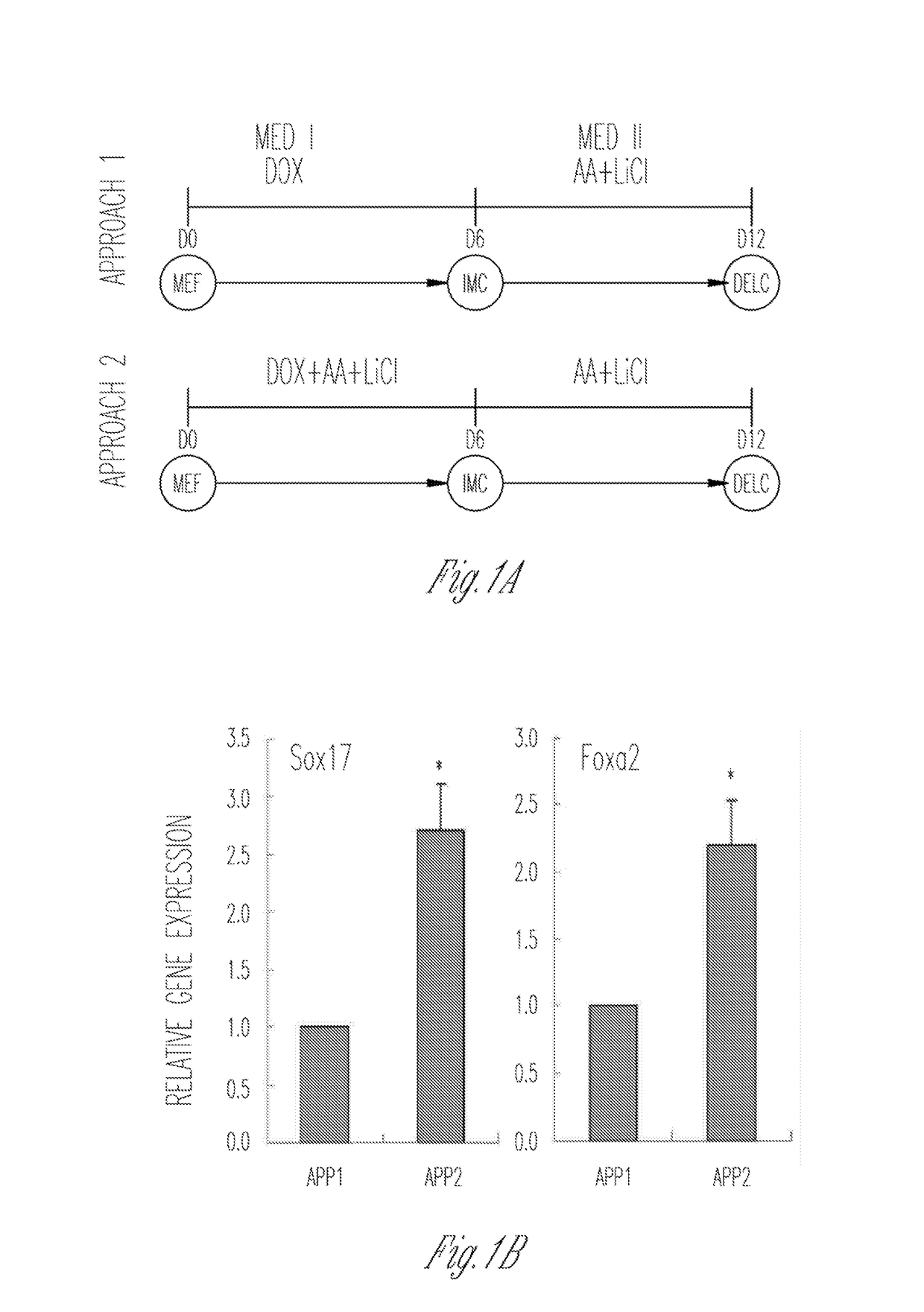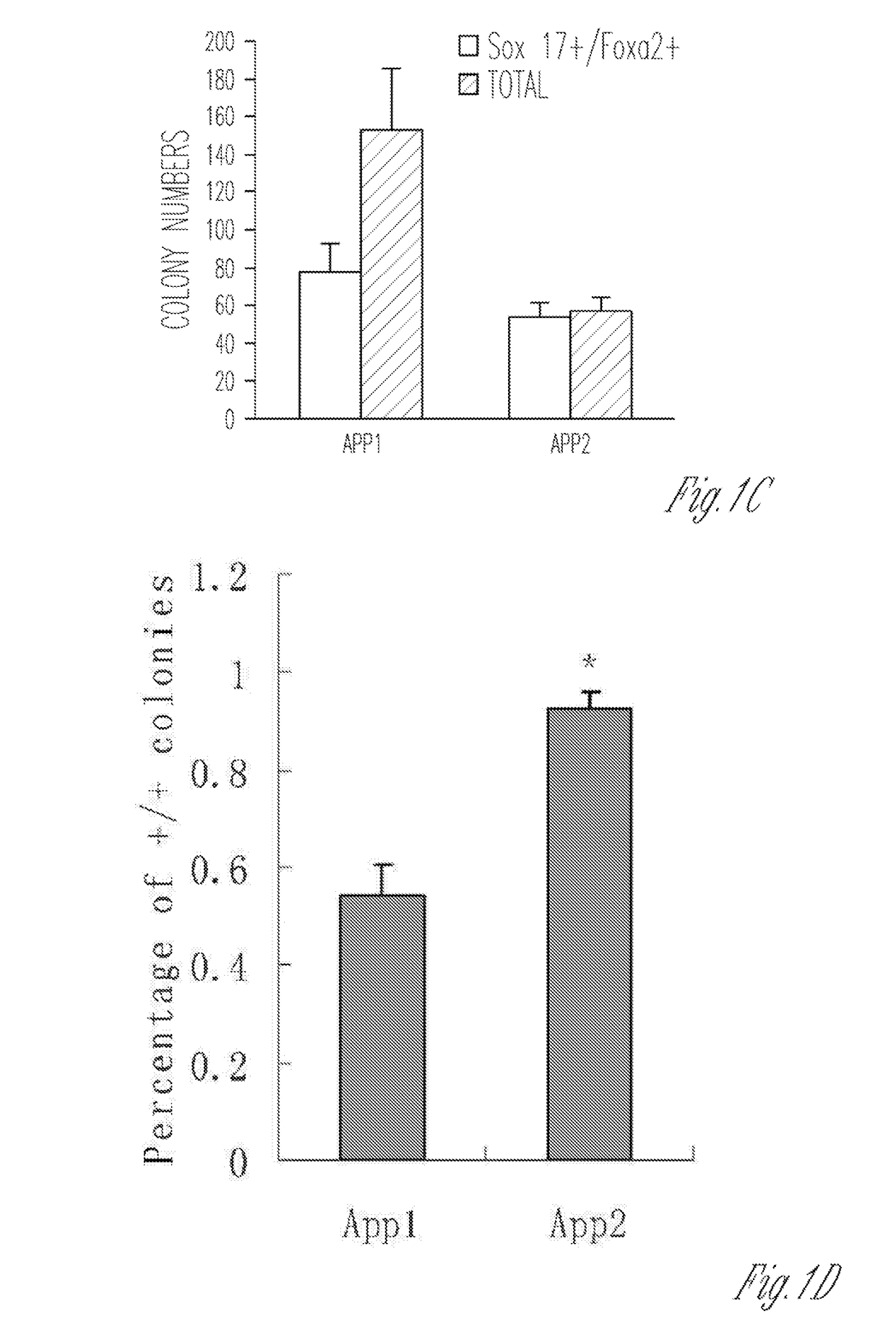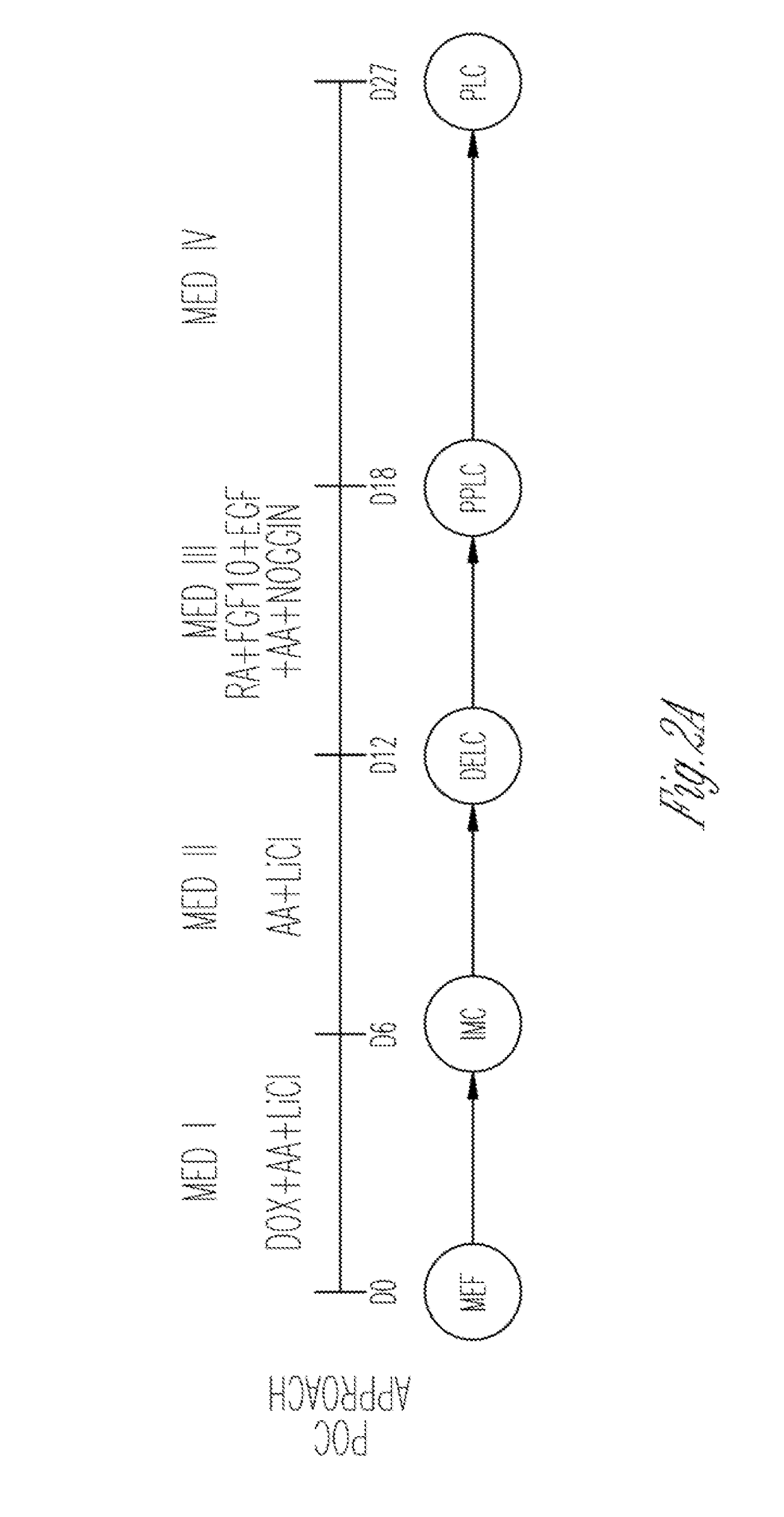Methods and Compositions for Producing Pancreatic Beta Cells
a pancreatic beta cell and composition technology, applied in drug compositions, artificial cell constructs, metabolic disorders, etc., can solve the problems of scarcity of functional, glucose-responsive beta cells, impede the use of islet transplantation as a readily available treatment, and unwanted risks and long-term complications, so as to prevent precocious endocrine induction, prevent precocious endocrine formation, and reduce blood glucose in diabetic mice
- Summary
- Abstract
- Description
- Claims
- Application Information
AI Technical Summary
Benefits of technology
Problems solved by technology
Method used
Image
Examples
example 1
Materials and Methods
[0635]This Example describes some of the materials and methods employed in development of the invention.
Dox-Inducible Secondary MEF Preparation
[0636]NGFP1 Dox-inducible induced pluripotent stem (iPS) cells (Stemgent) were injected into C57BL / 6 blastocysts and implanted into surrogate mice (CD1, Harlan). Chimeric embryos were isolated at E12.5-13.5. Heads, developing organs and spinal cords were carefully removed from the embryos, and MEFs were prepared and specifically selected as reported (Hanna, Markoulaki et al. 2008; Wernig, Lengner et al. 2008; Hanna, Saha et al. 2009).
Direct Reprogramming of Fibroblasts into Definitive Endoderm-Like Cells
[0637]Dox-inducible secondary mouse embryonic fibroblasts (MEFs) (cells at passage 3-4 were regularly used) were plated on Matrigel-coated culture dishes at a cell density of 1×104 cells / cm2. Cells were cultured in MEF medium (Dulbecco's modified Eagle's medium with 10% fetal bovine serum and 2 mM Glutamax) for an addition...
example 2
Direct Reprogramming of Fibroblasts into Definitive Endoderm-Like Cells (DELCs)
[0645]This Example describes procedures for generating definitive endoderm-like cells from mouse embryonic fibroblasts.
[0646]The doxycycline (Dox)-inducible secondary mouse embryonic fibroblast (MEF) system (Wernig, Lengner et al. 2008; Hanna, Saha et al. 2009) was employed to enable expression of the conventional four iPSC factors (the Yamanaka factors or Oct4, Sox2, Klf4, and c-Myc) with precise temporal control. MEFs were carefully prepared using standard procedures and used for reprogramming after 3-4 passages. Although endoderm cells may exist in starting MEF populations, no such contamination of these cells was observed in the cultures employed.
[0647]To extend and test the iPSC-factor-based lineage-specific reprogramming paradigm to endoderm, a two-step process was first devised to directly reprogram secondary MEF cells into definitive endoderm-like cells (DELCs). The first step (step I) involved cu...
example 3
[0652]Identification of Novel Combinations of Small Molecules that Enhance Generation of Pancreatic Progenitor-Like Cells
[0653]This Example describes experiments demonstrating that several small molecules can be used to generate pancreatic progenitor-like cells from cells that express factors such as Cerberus 1 (Cer), C—X—C chemokine receptor type 4 (Cxcr4), Sox17, and / or Foxa2.
[0654]Beta cell formation and maturation are impaired in Nkx6.1-null mutant mice and can be restored upon re-expression of Nkx6.1 in multipotential Pdx1+ pancreatic progenitors (Nelson et al., 2007). In other studies, Pdx1+ / Nkx6.1+ pancreatic progenitor cells differentiated from human ES cells could be purified with the cell-surface marker CD142, and after transplantation into mice, these purified progenitor cells gave rise to all pancreatic cell lineages, including glucose-responsive, insulin-secreting cells (Kelly et al., 2011). These studies suggest that dual expression of Pdx1 and Nkx6.1 is an indicator t...
PUM
| Property | Measurement | Unit |
|---|---|---|
| concentrations | aaaaa | aaaaa |
| concentrations | aaaaa | aaaaa |
| concentrations | aaaaa | aaaaa |
Abstract
Description
Claims
Application Information
 Login to View More
Login to View More - R&D
- Intellectual Property
- Life Sciences
- Materials
- Tech Scout
- Unparalleled Data Quality
- Higher Quality Content
- 60% Fewer Hallucinations
Browse by: Latest US Patents, China's latest patents, Technical Efficacy Thesaurus, Application Domain, Technology Topic, Popular Technical Reports.
© 2025 PatSnap. All rights reserved.Legal|Privacy policy|Modern Slavery Act Transparency Statement|Sitemap|About US| Contact US: help@patsnap.com



